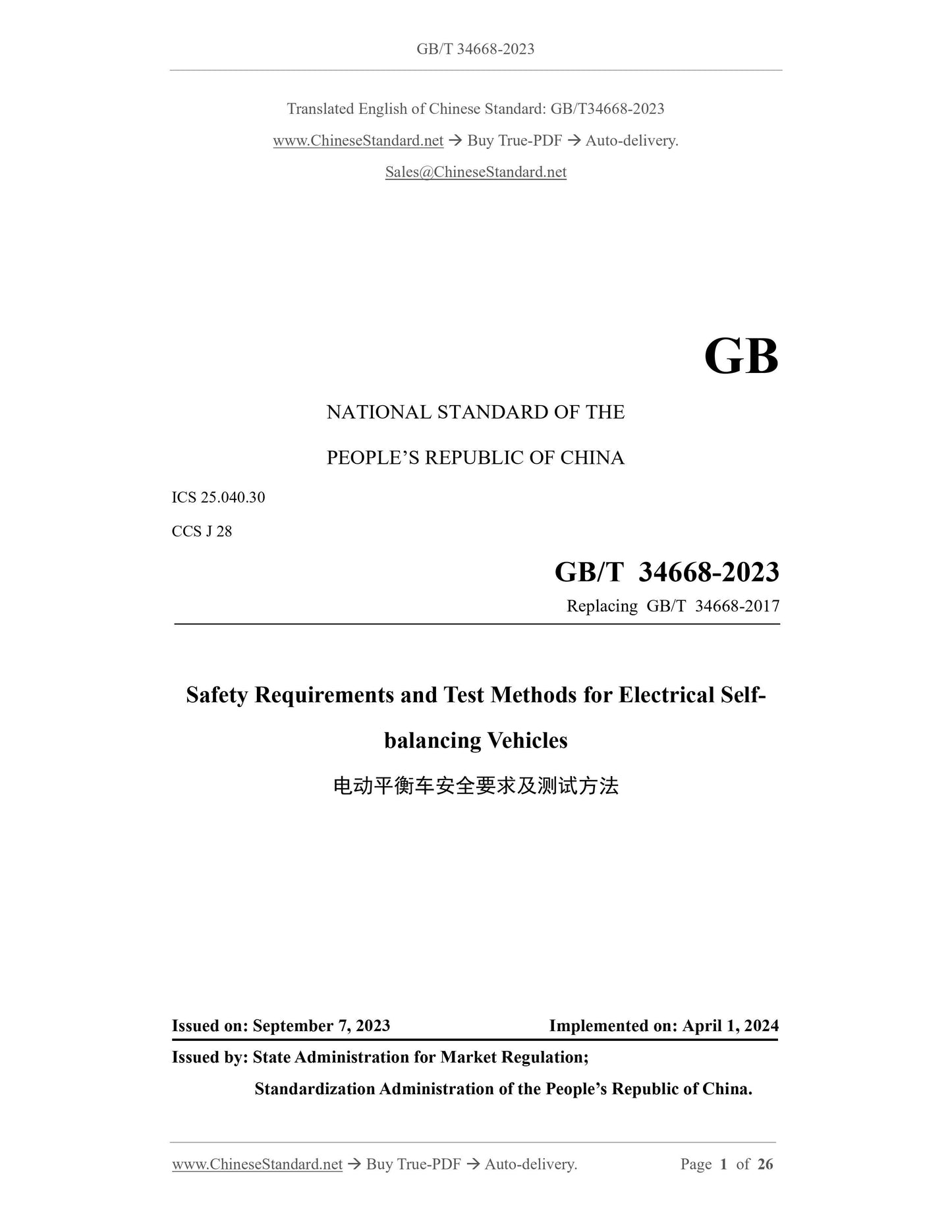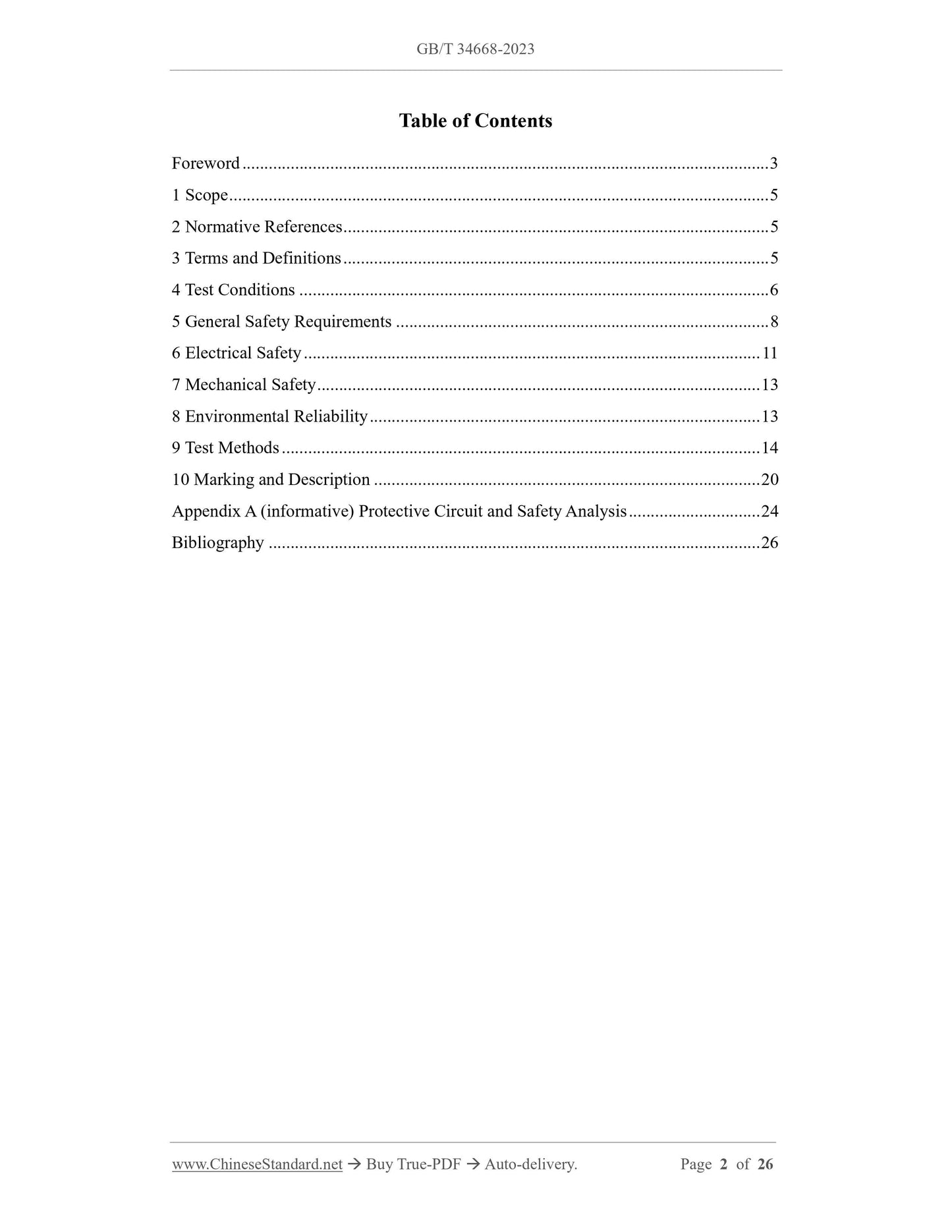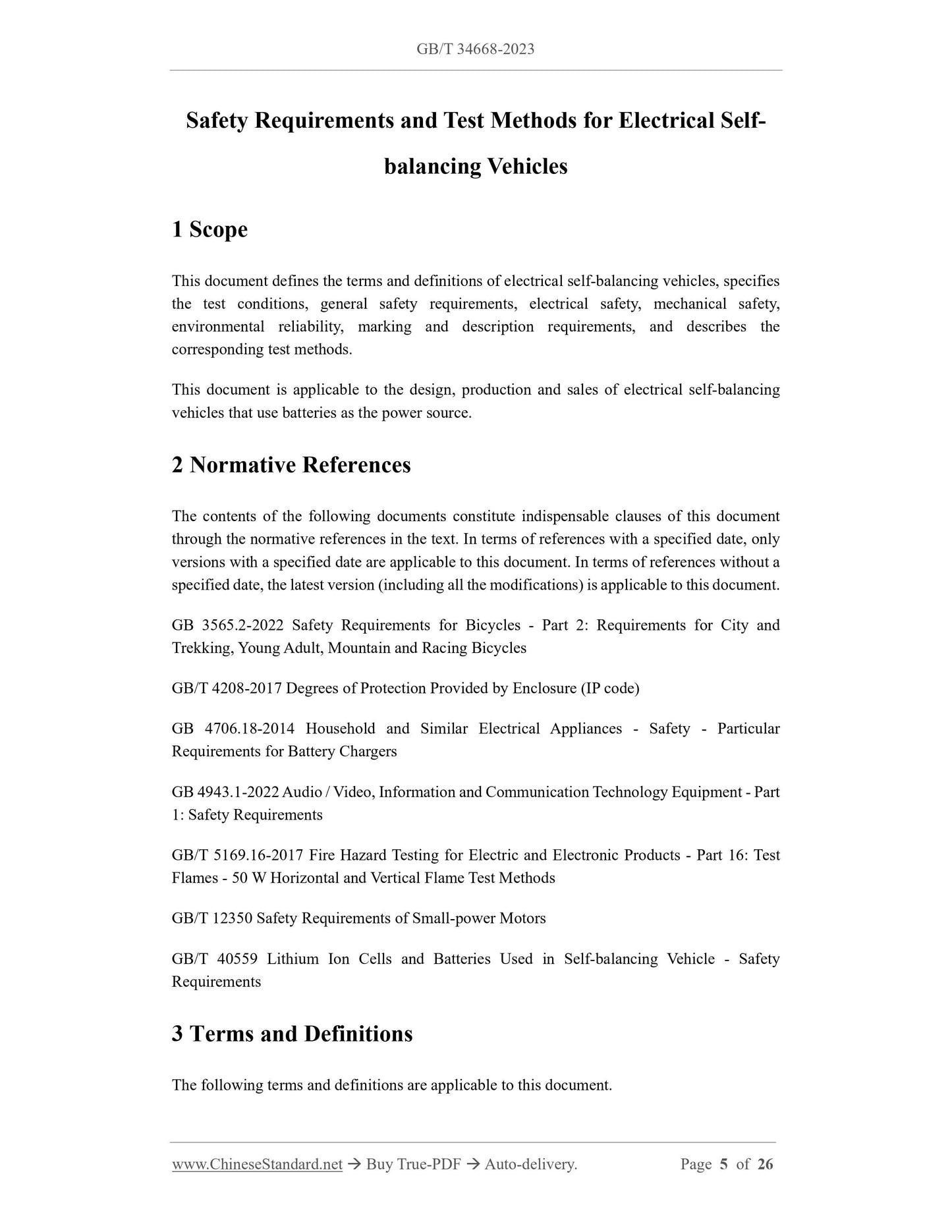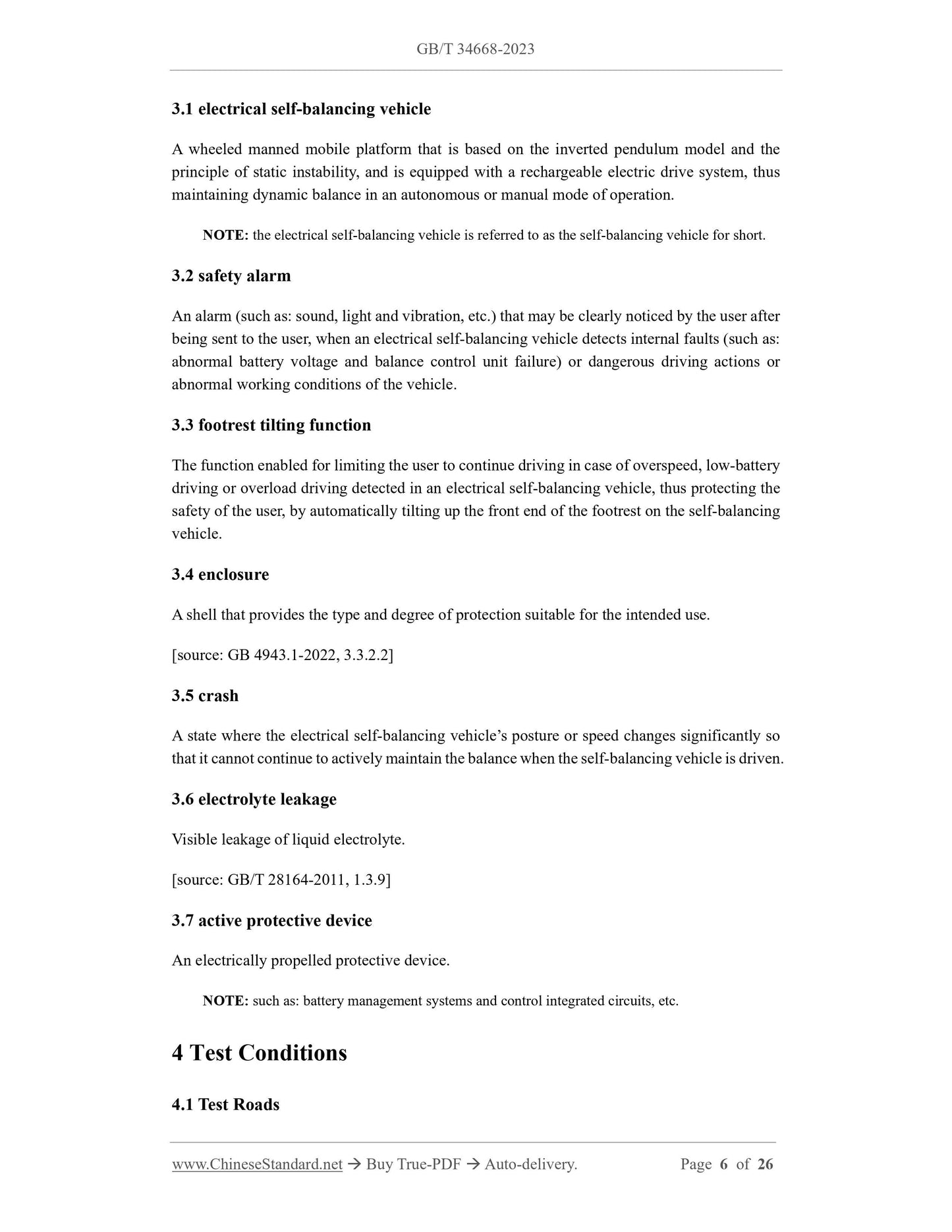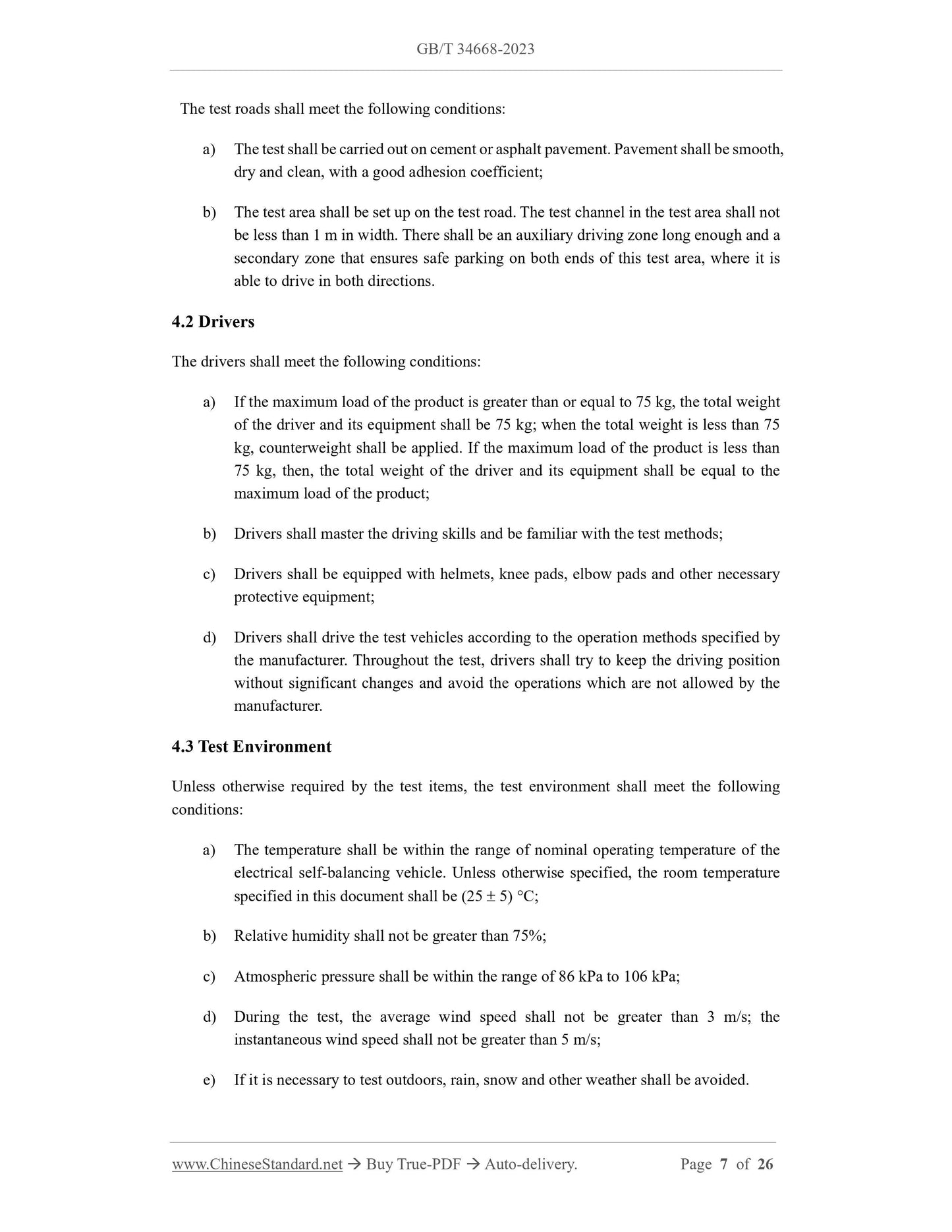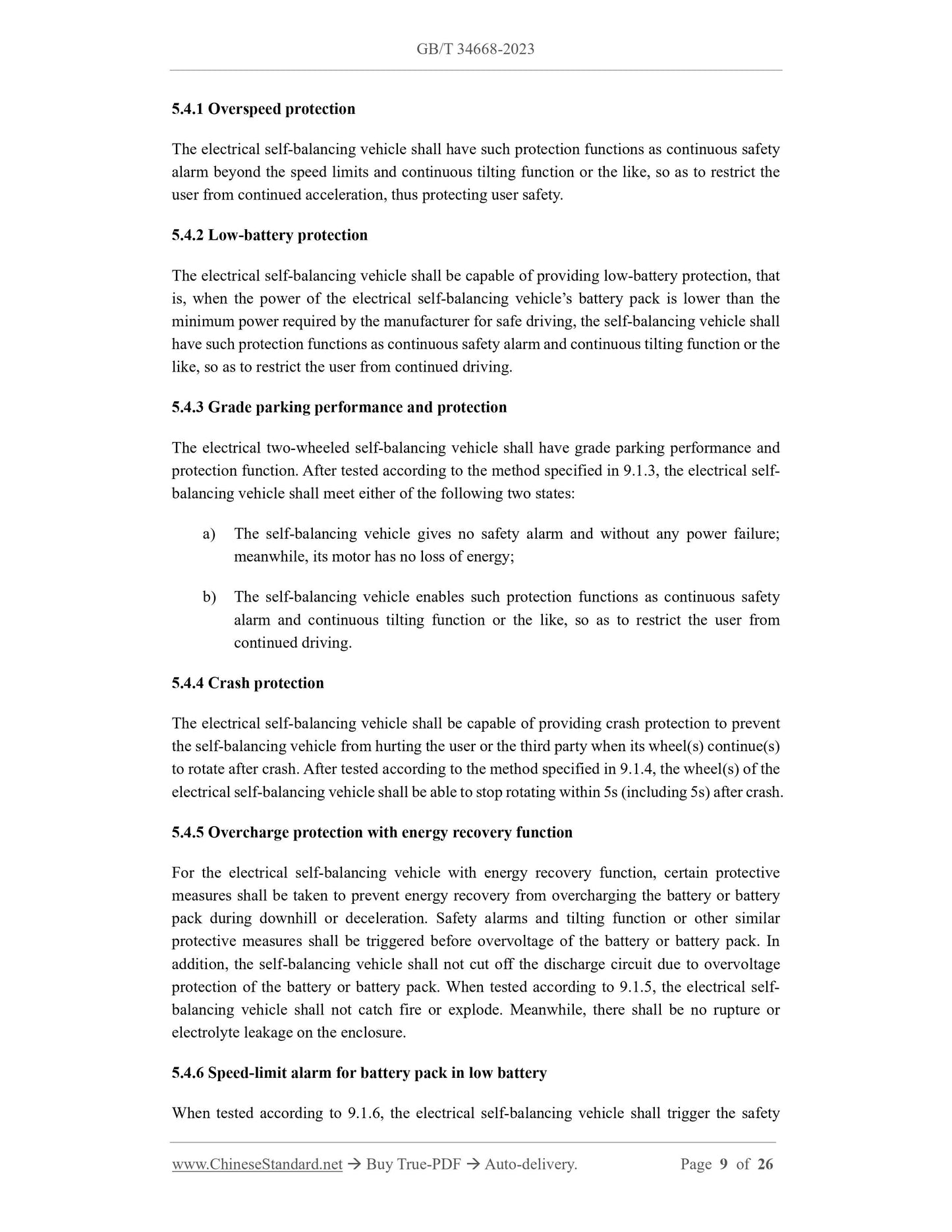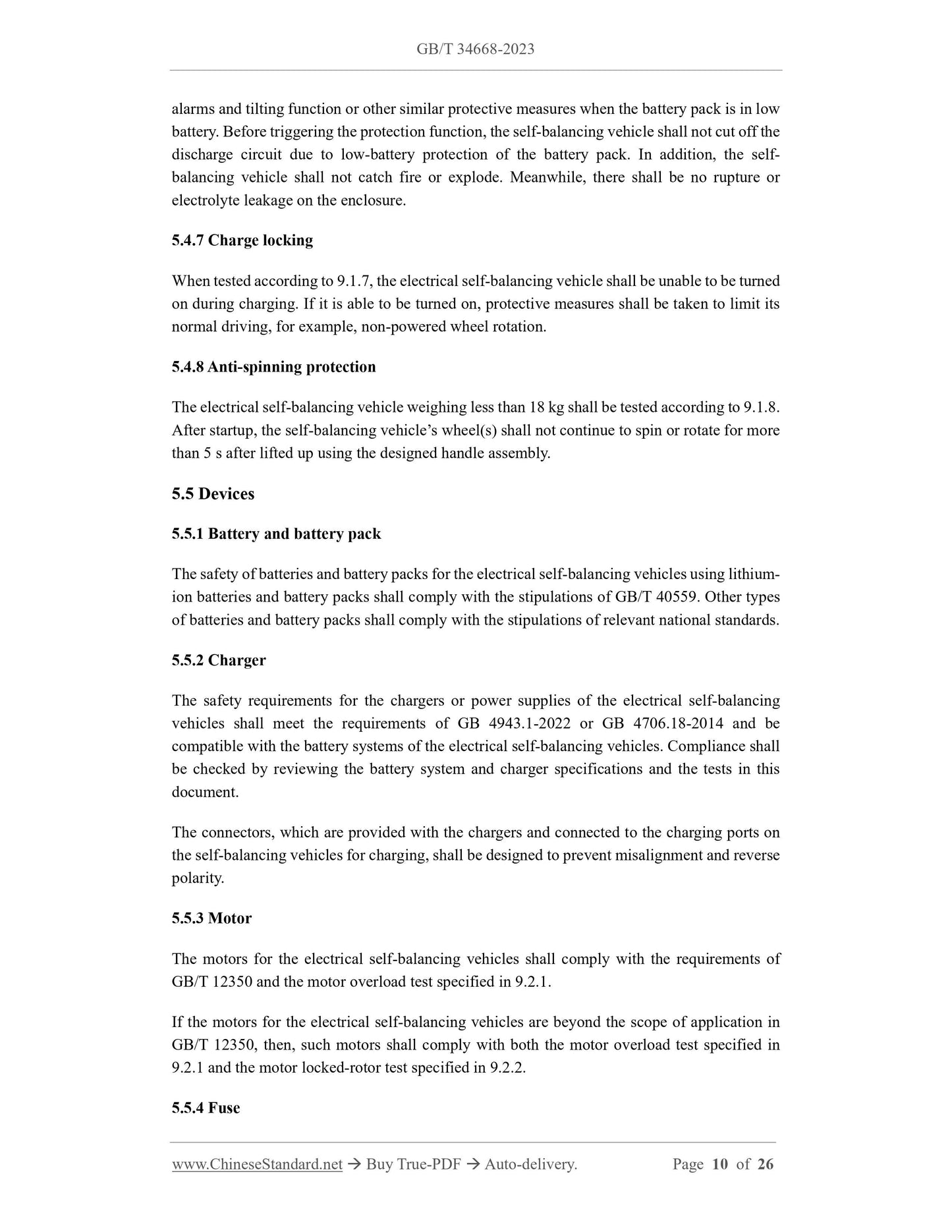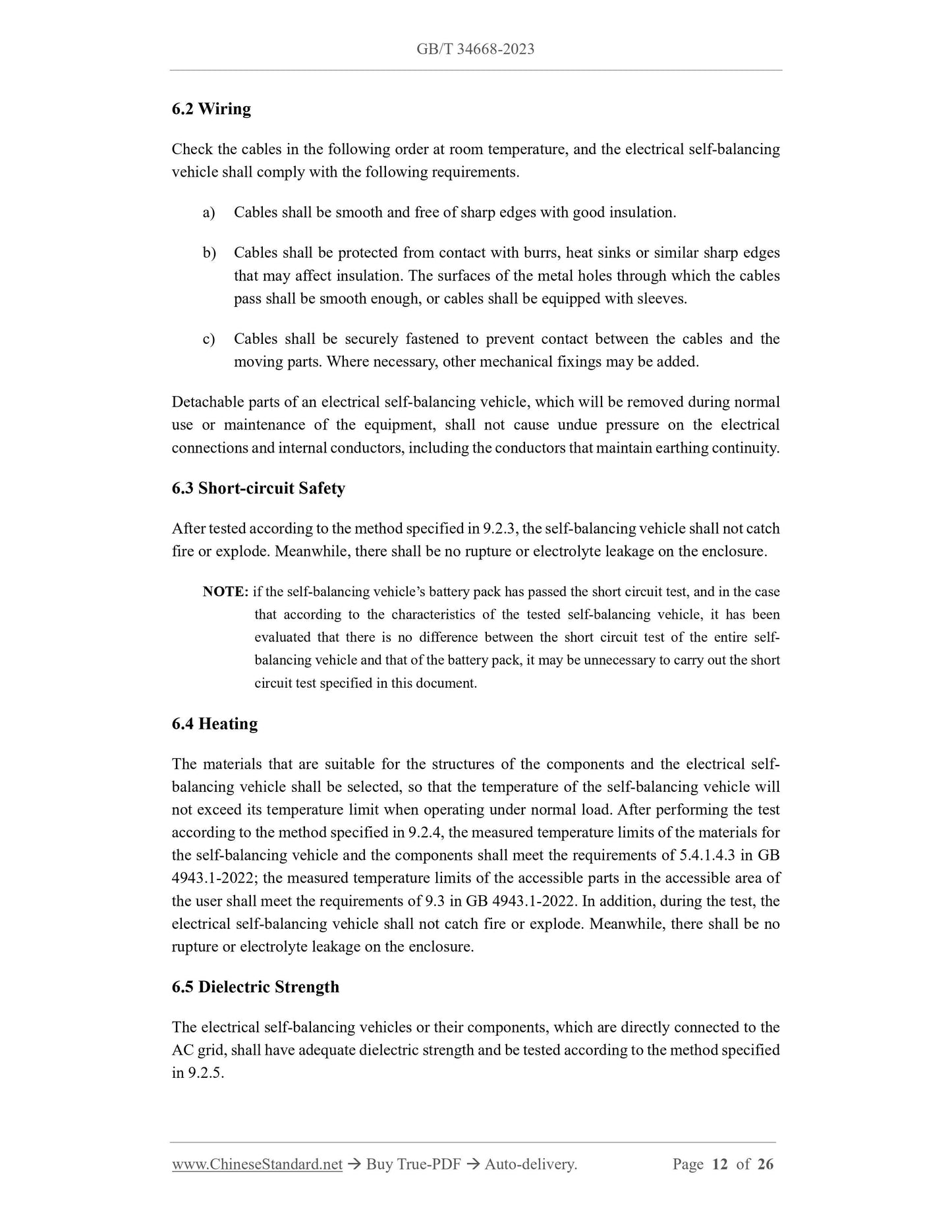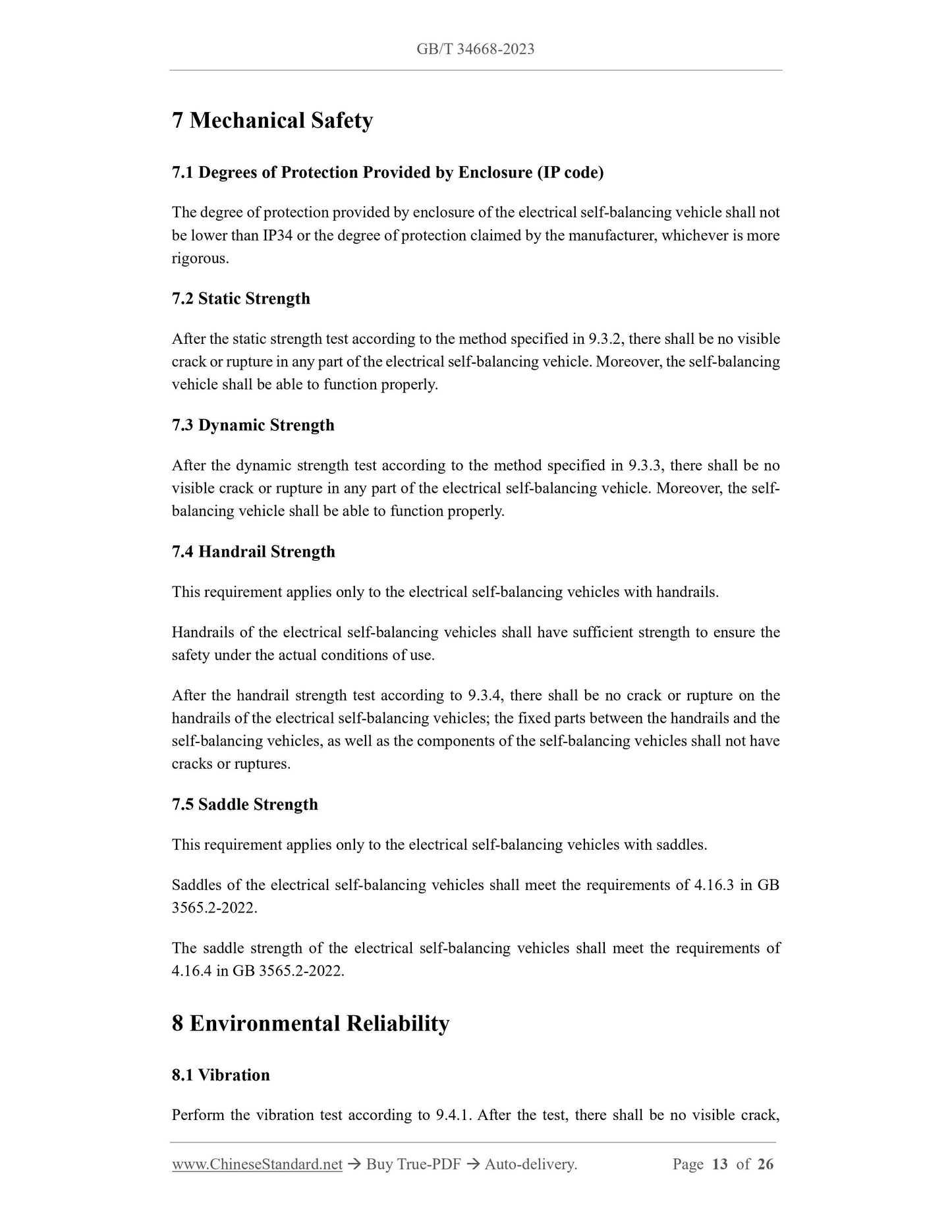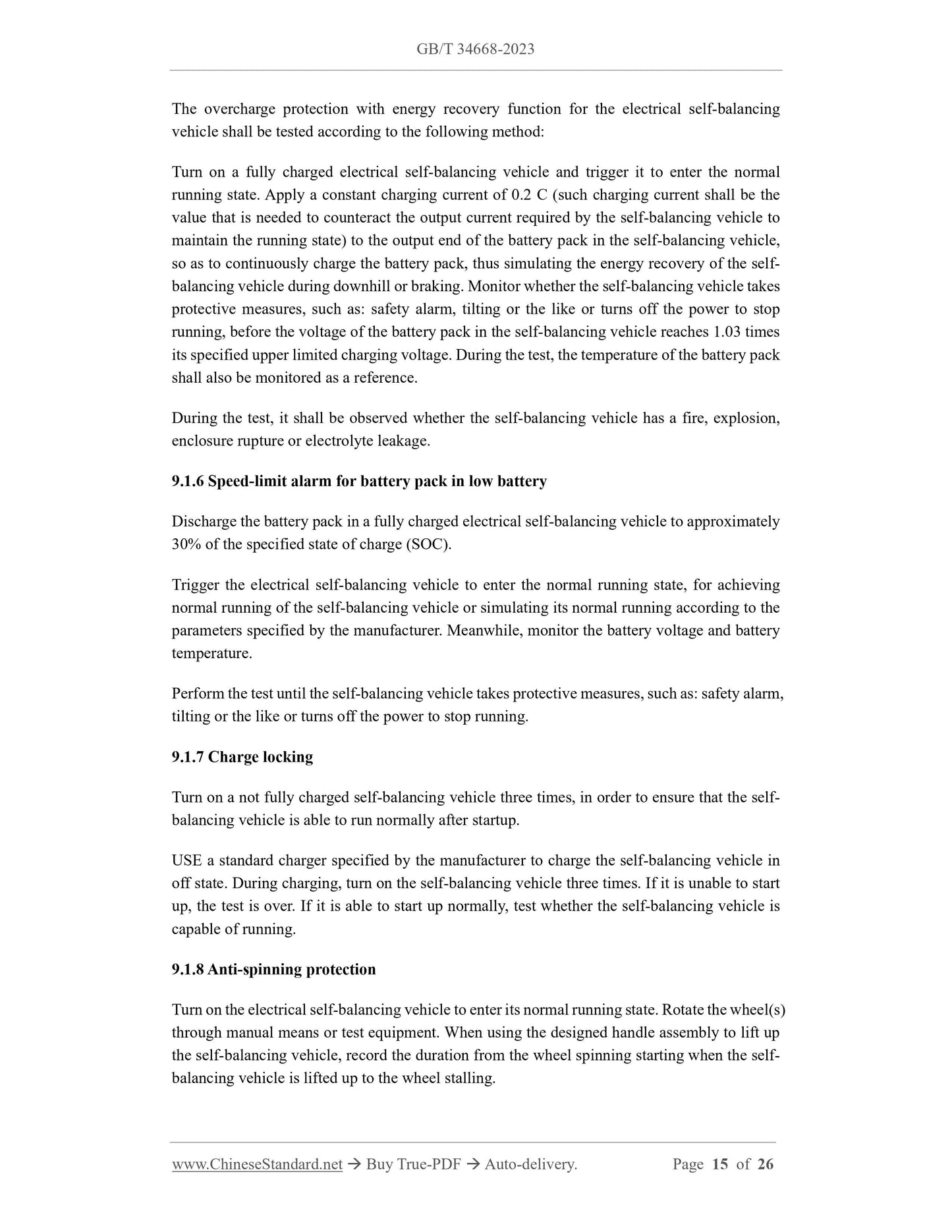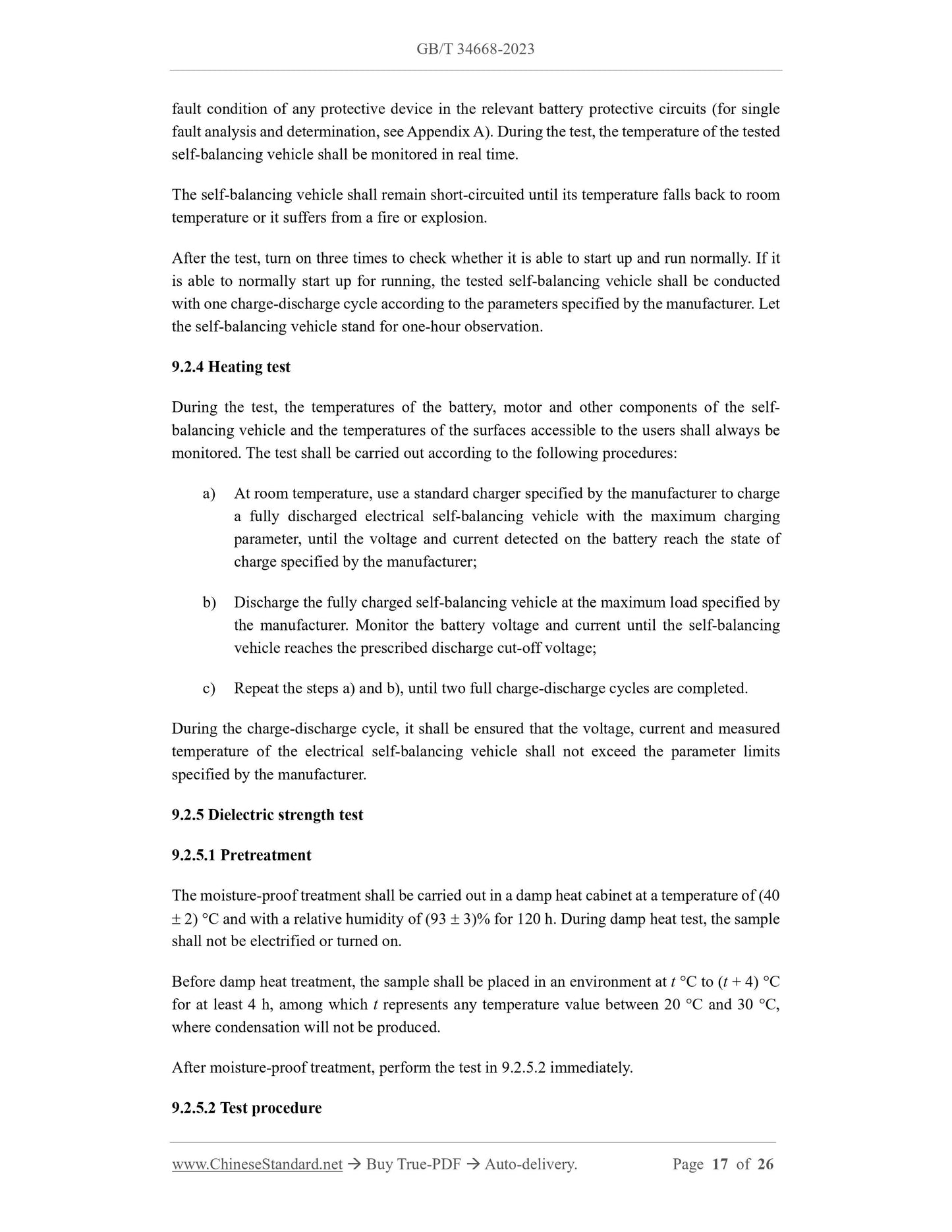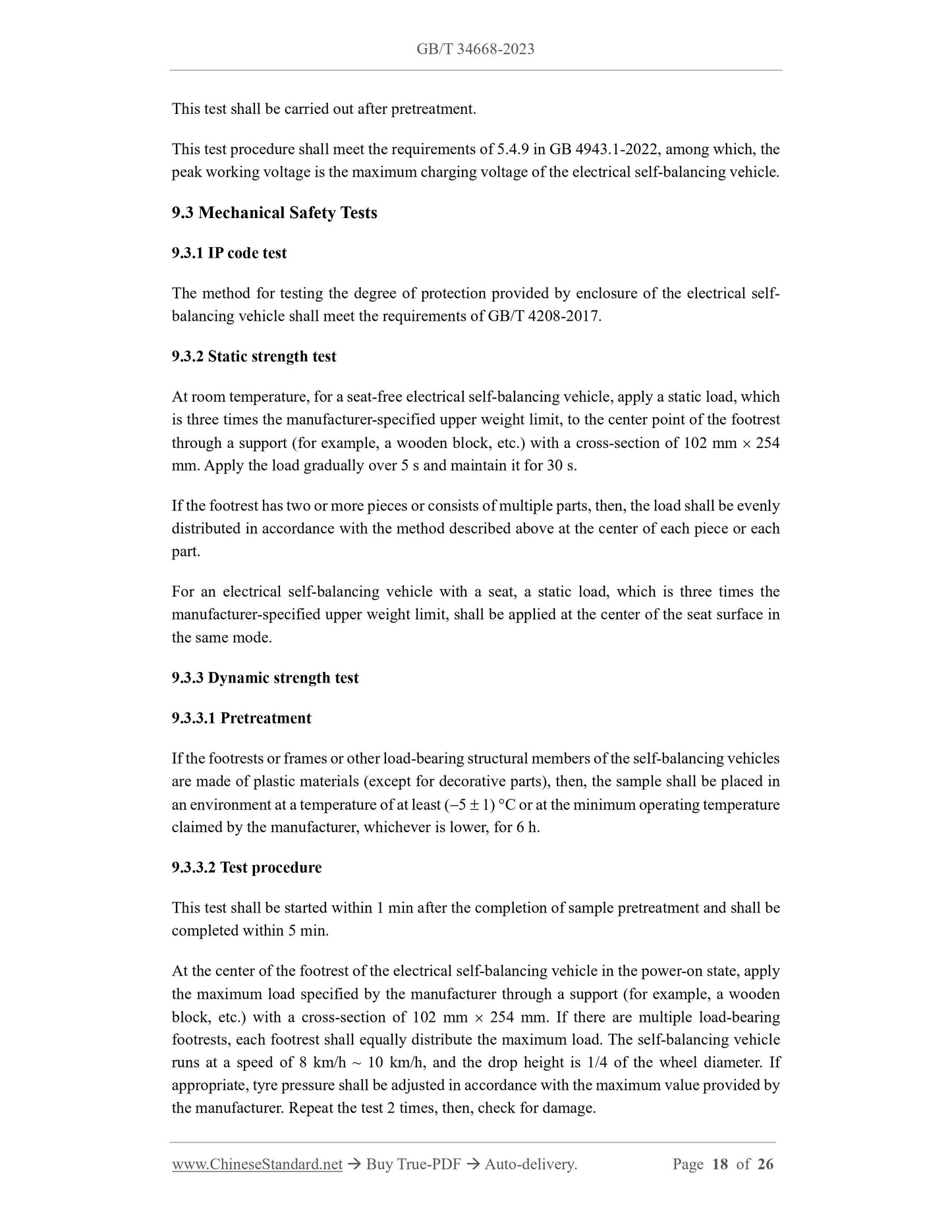1
/
of
12
www.ChineseStandard.us -- Field Test Asia Pte. Ltd.
GB/T 34668-2023 English PDF (GB/T34668-2023)
GB/T 34668-2023 English PDF (GB/T34668-2023)
Regular price
$325.00
Regular price
Sale price
$325.00
Unit price
/
per
Shipping calculated at checkout.
Couldn't load pickup availability
GB/T 34668-2023: Safety requirements and test methods for electrical self-balancing vehicles
Delivery: 9 seconds. Download (and Email) true-PDF + Invoice.Get Quotation: Click GB/T 34668-2023 (Self-service in 1-minute)
Newer / historical versions: GB/T 34668-2023
Preview True-PDF
Scope
This document defines the terms and definitions of electrical self-balancing vehicles, specifiesthe test conditions, general safety requirements, electrical safety, mechanical safety,
environmental reliability, marking and description requirements, and describes the
corresponding test methods.
This document is applicable to the design, production and sales of electrical self-balancing
vehicles that use batteries as the power source.
Basic Data
| Standard ID | GB/T 34668-2023 (GB/T34668-2023) |
| Description (Translated English) | Safety requirements and test methods for electrical self-balancing vehicles |
| Sector / Industry | National Standard (Recommended) |
| Classification of Chinese Standard | J28 |
| Classification of International Standard | 25.040.30 |
| Word Count Estimation | 18,173 |
| Date of Issue | 2023-09-07 |
| Date of Implementation | 2024-04-01 |
| Older Standard (superseded by this standard) | GB/T 34668-2017 |
| Issuing agency(ies) | State Administration for Market Regulation, China National Standardization Administration |
Share
